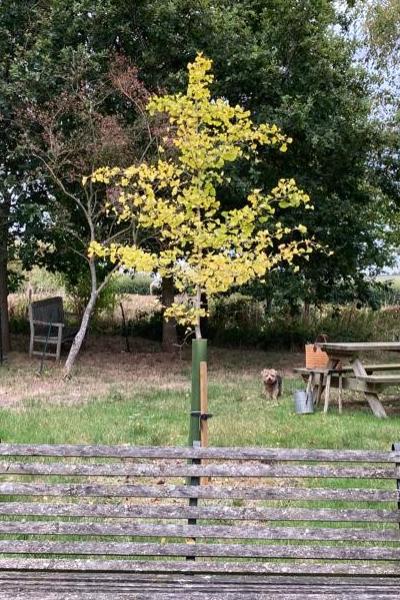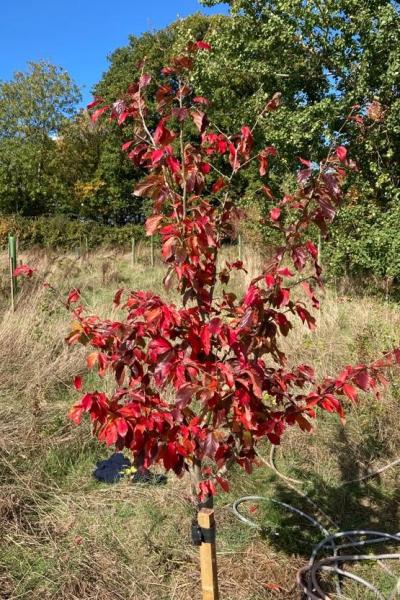Trees for Wonderful Autumn Colour
It's that time of the year again when trees, shrubs and plants seem to burst into flames, an explosion of fiery colours backlit by the low mellow light of autumn. Trees create structure and drama in the landscape, which can be recreated in your garden by choosing the right trees. Many of you will know Julie for her lovely displays in the retail area but may not realise she is actually planting a wood or mini arboretum, inspired by her family and her overwhelming love of trees. Her goal is to plant a tree for every member of her extended family and most importantly for the future, a legacy to be enjoyed by current and future family and their friends.
Here are three of her favourite trees from her wood:

Gingko biloba
Julie selected this tree 'as it is one of the oldest trees in existence and I think it is so important to plant for the future. It has beautiful leaves that become intense golden yellow in Autumn.'
A truly ancient tree, Gingko biloba is the oldest surviving tree species dating from the Permian Period (the last period of the Paleozoic Era) a lofty 260 million years ago. As you can expect from something that has been around so long, it has developed a few quirky attributes. Individual trees are either male or female and if grown from seed you cannot tell which they are until they have reached 20 years old.
Reproduction is interesting too with male trees producing small catkin-like cones that release pollen in the spring, while the female tree's flowers appear with the leaves and comprise a single stalk with two ovules at the tip. The resulting seeds that form in Autumn look like small apricots, but, less appealingly, smell terrible.

Parrotia persica
Julie says 'this is one of the first trees that I saw in a woodland setting and it was just magnificent. An older tree, it was twisted and gnarled in a beautiful way. I knew I had to plant one if I ever had enough space'.
Native to Iran, this beautiful ornamental tree is commonly known as persian ironwood. In addition to the attractive foliage that turns shades of yellow, red and purple in autumn, its bark gently flakes to reveal patches of cinnamon, pink, green and pale yellow too. This is shown off to great advantage in winter, especially late winter, when small dark pinky-red spider like flowers appear, reflecting its relationship to Hamamelis or Witch Hazels.

Liquidambar styraciflua 'Worpleston'
Julie chose this for its 'statuesque form, grace and magnificent autumn colour. '
Native to the warmer south-east states of North America, Mexico and Central America, the Liquidambar's 5-pointed leaves resemble those of the maple. Carl Linnaeus named this genus in 1753 for its fragrant 'juice' or resin which flows from the tree. A medium to large tree (achieving heights of between 15 and 40 metres depending upon on the cultivar), individuals can live to be 400 years old. Its autumn colours are particularly striking with the foliage turning deep orange, crimson and purple.
